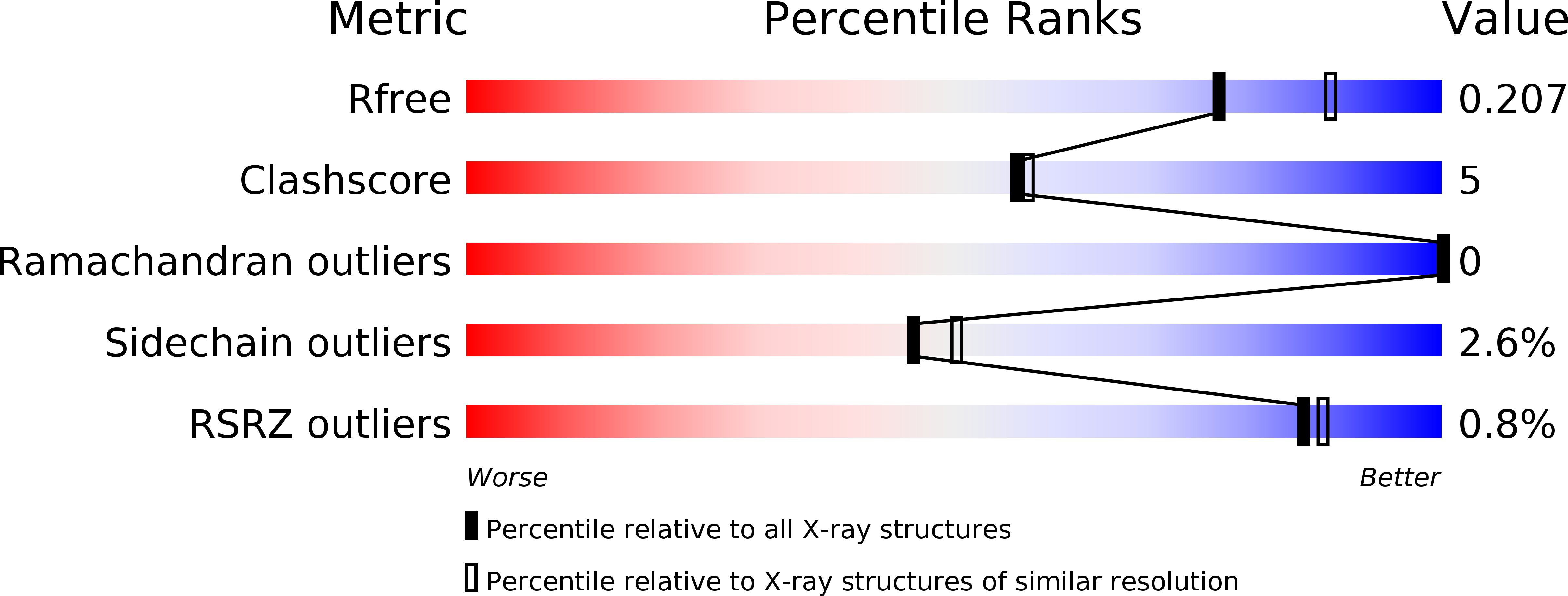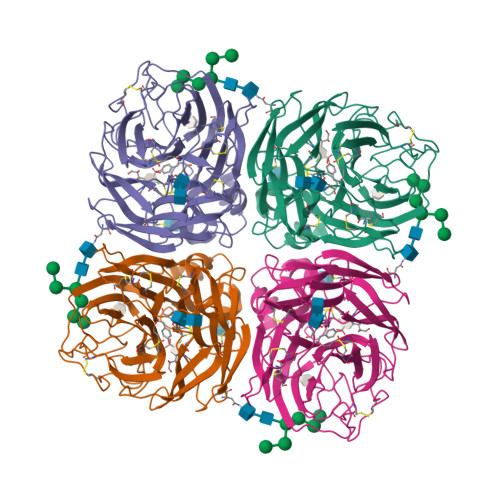Catalytic mechanism and novel receptor binding sites of human parainfluenza virus type 3 hemagglutinin-neuraminidase (hPIV3 HN)
Streltsov, V.A., Pilling, P., Barrett, S., McKimm-Breschkin, J.L.(2015) Antiviral Res 123: 216-223
- PubMed: 26364554
- DOI: https://doi.org/10.1016/j.antiviral.2015.08.014
- Primary Citation of Related Structures:
4WEF, 4WEG - PubMed Abstract:
The human parainfluenza virus type 3 (hPIV3) hemagglutinin-neuraminidase (HN) has opposing functions of binding sialic acid receptors and cleaving them, facilitating virus release. The crystal structure of hPIV3 HN complexed with the substrate analogue difluorosialic acid (DFSA) revealed that catalysis by HN involves the formation of a covalently linked sialosyl-enzyme intermediate which was trapped along with a transition-state analogue resembling an oxocarbenium ion. This mechanism of enzyme catalysis was also confirmed in the crystal structure of the influenza N9 neuraminidase complexed with DFSA. Additionally, novel secondary receptor binding sites were identified in the hPIV3 HN-DFSA complex including one near the catalytic cavity which upon binding DFSA imposes subtle changes and may help the HN balance the opposing functions. Multiple receptor binding sites may increase avidity to facilitate cell binding and fusion promotion. The secondary receptor binding sites in the paramyxoviruses are so far unique to each virus type.
Organizational Affiliation:
CSIRO Manufacturing, 343 Royal Parade, Parkville, Victoria 3052, Australia. Electronic address: victor.streltsov@csiro.au.























